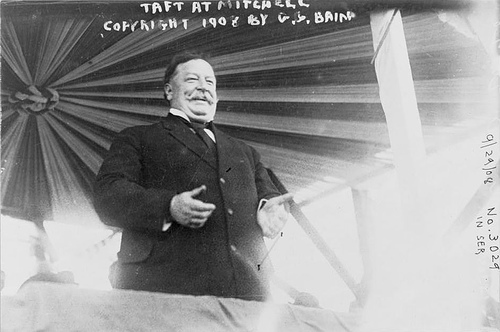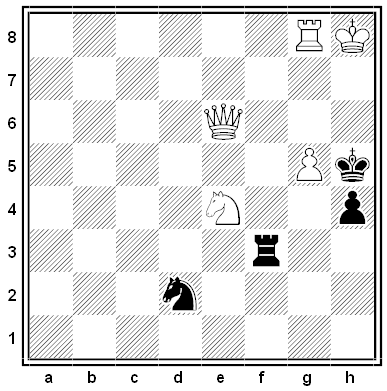“Not to know what happened before you were born is to remain forever a child.” — Cicero
Budget Trouble

An energetic boy got a piggy bank for his birthday. He decided that from then on he will number every bill he gets from his grandparents (1, 2, …) and put it all in his bank. During the first half year he got 2 bills, but at the end of this period he pulled out 1 bill (chosen at random). In the next 1/4 year he got 2 more bills, but at the end of this period he pulled 1 bill chosen at random from the 3 bills in his bank. In the next 1/8 year he repeated the same routine etc. (each period is half the length of the previous period). What is the probability that any of the bills he got during this year will remain in his bank after a full year of the above activity? Paradoxically the probability is 0, even though it is clear that he only spent half of his money. Can we offer the boy good financial advice without making him cut his expenses?
— Talma Leviatan, “On the Use of Paradoxes in the Teaching of Probability,” Proceedings of ICOTS 6, 2002
Light Exercise

William Howard Taft sometimes tipped the scales at 350 pounds. While serving as governor of the Philippines, he made a trip into the mountains for his health. He cabled Secretary of War Elihu Root:
STOOD TRIP WELL. RODE HORSEBACK 25 MILES TO 5,000 FEET ELEVATION.
Root wrote back:
REFERRING TO YOUR TELEGRAM … HOW IS THE HORSE?
The Meaning of Life
Along with art and love, life is one of those bedeviling concepts that we really ought to have a definition for but don’t. Philosophers tend to regard the question as too scientific, and scientists as too philosophical. Linus Pauling observed that it’s easier to study the subject than to define it, and, J.B.S. Haldane noted, “no definition will cover its infinite and self-contradictory variety.”
Classical definitions of life typically refer to structural features, growth, reproduction, metabolism, motion against force, response to stimuli, evolvability, and information content and transfer. But definitions built on these elements are prone to exceptions. Fire grows, moves, metabolizes, reproduces, and responds to stimuli, but is “nonliving.” So are free-market economies and the Internet, which evolve, store representations of themselves, and behave “purposefully.” I am nonreproducing but, I hope, still alive.
If we we look around us, it’s hard to find a property that’s unique to life, and even if we could, our observations are limited to Earth’s biosphere, a tiny, tenuous environment like a film of water on a basketball. But if we expand our list to include abstract properties such as resistance to entropy, then we risk including alien phenomena that we might not regard intuitively as living.
Perhaps the answer is more poetic. “As I see it, the great and distinguishing feature of living things … is that they have needs — continual, and, incidentally, complex needs,” wrote botanist Donald C. Peattie in 1935. “I cannot conceive how even so organized a dead system as a crystal can be said to need anything. But a living creature, even when it sinks into that half-death of hibernation, even the seed in the bottom of the driest Mongolian marsh, awaiting rain through two thousand years, still has needs while there is life in it.”
Workaround

When Dutch army colonel J.W.C. van Gorkum died in 1880, he was laid to rest in a Protestant cemetery. His wife, Lady J.C.P.H. van Aefferden, knew that her Catholic faith destined her for a separate cemetery. So she contrived a solution: Before her death in 1888, she requested the burial plot abutting the colonel’s and asked that the tombstones “join hands” over the wall — so that the two of them could hold hands through eternity.
A Cynic’s Glossary
Entries in Ambrose Bierce’s The Devil’s Dictionary (1911):
CRITIC, n. A person who boasts himself hard to please because nobody tries to please him.
EDUCATION, n. That which discloses to the wise and disguises from the foolish their lack of understanding.
FAMOUS, adj. Conspicuously miserable.
HABIT, n. A shackle for the free.
HERS, pron. His.
IMMIGRANT, n. An unenlightened person who thinks one country better than another.
IMPUNITY, n. Wealth.
LABOR, n. One of the processes by which A acquires property for B.
LANGUAGE, n. The music with which we charm the serpents guarding another’s treasure.
MAN, n. An animal so lost in rapturous contemplation of what he thinks he is as to overlook what he indubitably ought to be.
OCEAN, n. A body of water occupying about two-thirds of a world made for man — who has no gills.
OTHERWISE, adv. No better.
POLITENESS, n. The most acceptable hypocrisy.
YEAR, n. A period of three hundred and sixty-five disappointments.
He defined nonsense as “the objections that are urged against this excellent dictionary.”
Reflections

The word bid has vertical symmetry in lowercase and horizontal symmetry in uppercase.
(Thanks, Joseph.)
Black and White
Limited Lease

The earth goes on the earth glittering in gold,
The earth goes to the earth sooner than it wold;
The earth builds on the earth castles and towers,
The earth says to the earth, All this is ours.
— Inscription on the ruined gate at Melrose Abbey, Roxburghshire, Scotland
Extra Credit

In studying the parasitic protozoan Plasmodium ovale in 1954, English parasitologist William Cooper volunteered to receive the bites of about a thousand mosquitos, and nine days later underwent a laparotomy in which a piece of his liver was removed. On recovering, he stained the sections himself, located the malaria parasite stages in his own tissue, and painted these in watercolors to accompany the resulting article.
His coauthor, University of London protozoologist Cyril Garnham, wrote that Cooper “attained everlasting fame by this episode.”
(P.C.C. Garnham et al., “The Pre-Erythrocytic Stage of Plasmodium Ovale,” Transactions of the Royal Society of Tropical Medicine and Hygiene 49:2 [March 1955], 158-167) (Thanks, Andrew.)

